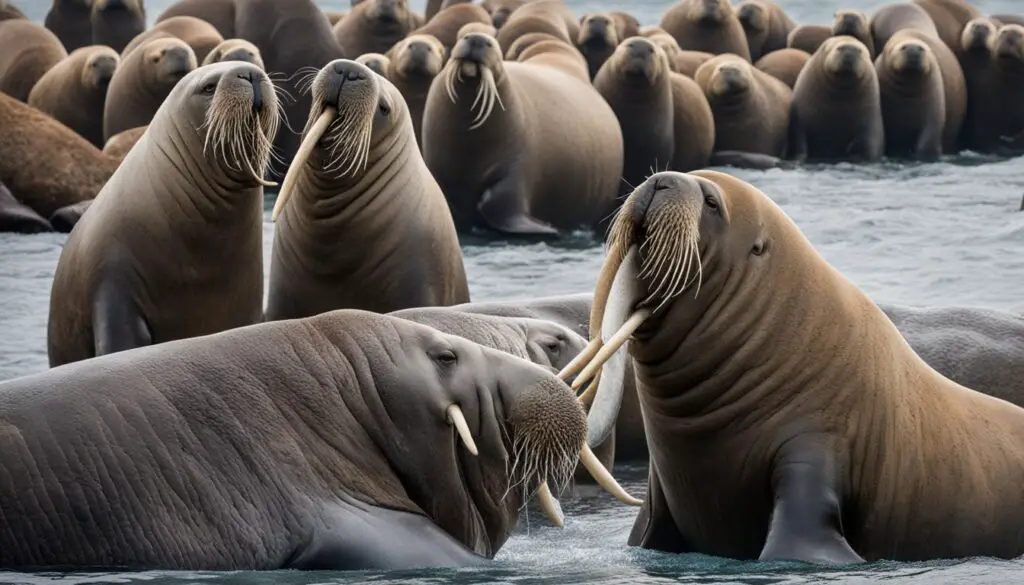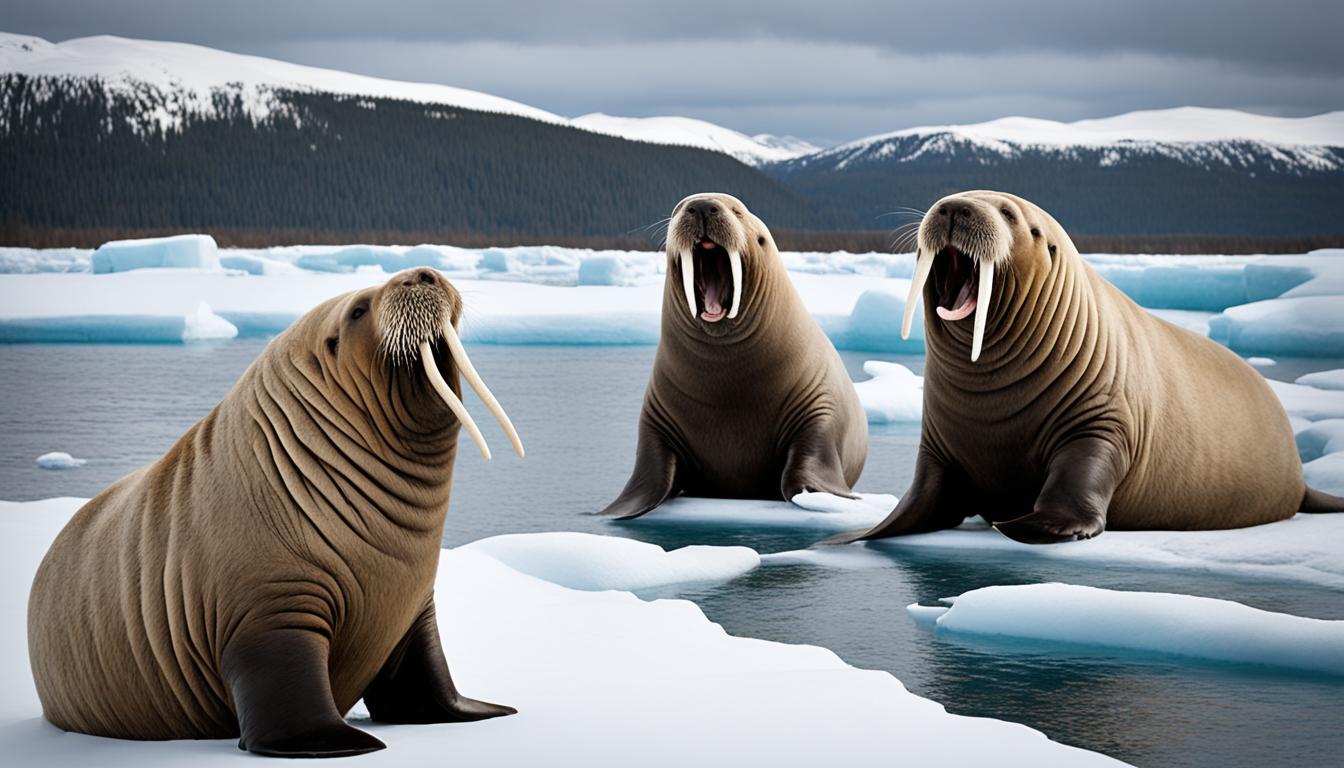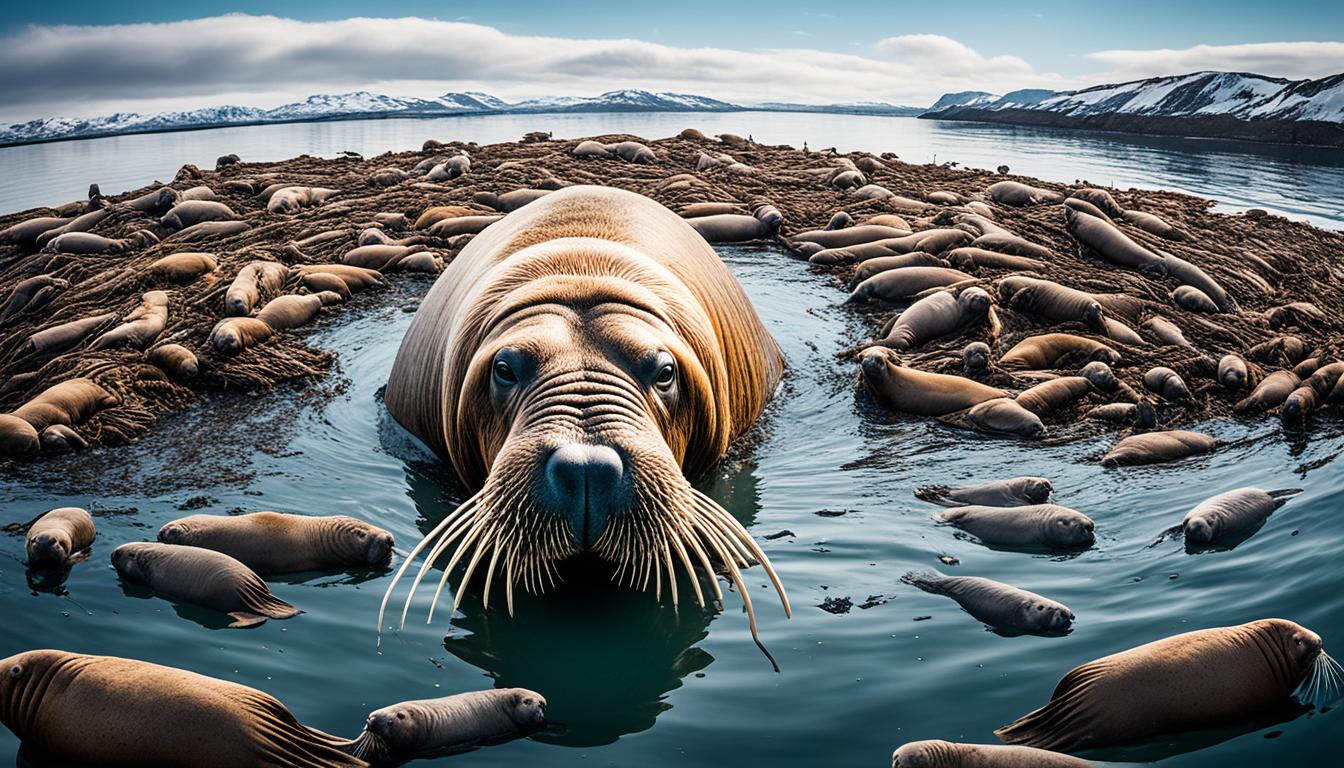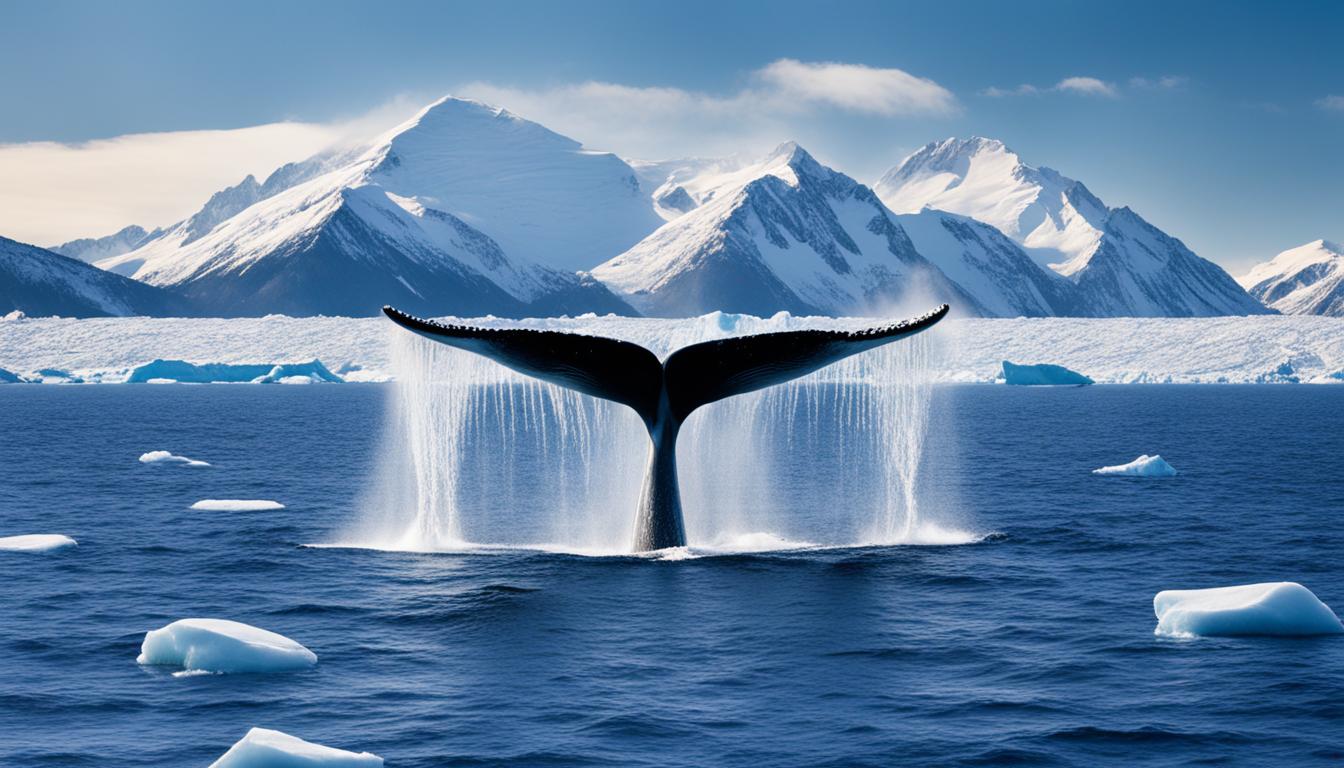Walruses are amazing marine mammals with complex social lives and many ways to talk to each other. You might ask, how do walruses communicate? They use sounds, body language, and social cues to talk to each other. To understand walruses, we need to look at their vocalizations and body language. This helps us see how they act in their Arctic home. Let’s dive into the ways walruses communicate, preparing us for more details later.
Understanding Walrus Vocalizations
Walruses have a special way of talking to each other with different sounds. These walrus vocalizations help them share messages in social and environmental settings. By learning about these sounds, we can better understand their behavior and social life.
Types of Sounds Produced
Walruses make a wide range of sounds, like growls, barks, grunts, and soft whistles. These sounds are used in various situations, both in and out of the water. This variety shows how complex their social lives are.
Male Vocalizations
Male walruses have their own special way of making sounds. They use air sacs in their throat to produce bell-like noises. This is different from the sounds made by their vocal cords. When they’re showing off or competing, they make snorts and roars. These sounds help them show who’s boss and protect their territory.
How do walruses communicate?
Walrus communication is complex, using many ways to send messages and feelings. The main walrus communication methods are sounds, body language, and social actions. Sounds help in different situations, like during mating or in group settings.
Walruses make many sounds, like clicks, grunts, and whistles, each with its own meaning. These sounds are key in walrus behavior communication. They are important in courtship and caring for young.
Walruses also use body language to communicate. They show feelings through posture, movement, and touch. Touch can mean love or leadership, and certain moves add to their communication. Knowing about these ways helps us understand their social lives.
These ways of communicating help walruses build relationships and survive in the Arctic. By studying them, we learn more about the social lives of these amazing creatures.
Walrus Body Language as a Communication Method
Walruses don’t just use sounds to talk to each other. They also use body language to communicate. This is very important during courtship. Males show off with special moves and sounds to show their interest.
Visual Displays during Courtship
In the mating season, walruses show off with special behaviors. Males swim beautifully and move their bodies in certain ways. These actions catch the eye of potential mates. They show they are strong and healthy, which is important to attract females.
This visual communication is key in their social world. It lets them send messages without words.
Striking with Tusks
Tusks are not just for eating and defending. They also help walruses show who’s boss. Males hit each other with their tusks during fights or when competing for mates. This shows who is stronger and more important in the group.
This behavior shows how important body language is in walrus social life. It helps them understand each other’s roles and relationships.
The Role of Social Signals in Walrus Groups
Walruses have many social signals that are key to their group life. These signals help us understand their complex social life. They change with the seasons and affect different groups of walruses. These signals are vital for keeping relationships strong and setting up a social order.
Importance of Herd Structure
The social structure of walruses is crucial for their health. Herds can grow or shrink with the seasons. In winter, big groups offer safety from predators. But in summer, smaller groups form for breeding.
These changes are shown through special signals among walruses. These signals keep the group together and stable.
Mother-Calf Interactions
How mothers and calves talk to each other is key in walrus society. They use special sounds to stay close. This is important for the calf’s survival, as it helps the calf find its mother in a big group.

Walrus Underwater Communication Techniques
Walruses have unique ways of talking underwater. They use sounds to share important info when they’re under the sea. It’s key to know these sounds to understand how they live together.
Sounds Made Below Water
Underwater, walruses make clicks, taps, and sounds like a bell. These sounds help keep their groups together and guide them. They’re important for social events, finding food, and finding a mate. These sounds help walruses stay connected and work together.
Effects of Underwater Noise Pollution
Human actions are harming the underwater world of walruses. Noise from ships and oil drills is a big problem. This noise can make it hard for walruses to hear each other.
This can mess up their social life and hurt their health. So, it’s important to protect their underwater world.
Impact of Climate Change on Walrus Communication
Climate change is changing the way walruses talk to each other. As the sea ice melts, walruses are coming ashore more often. This makes them gather in big groups, which can make communication hard. It leads to confusion and stress among them.
Human activities are also making things harder for walruses. Noise from ships and factories makes it hard for them to hear each other. This can mess up their way of talking and might affect their social life and finding mates.
Changes in their home affect walrus behavior, how well they reproduce, and if they survive. We need to know how climate change affects these animals and their way of communicating. We must work to protect walruses and help them communicate well in a changing world.










